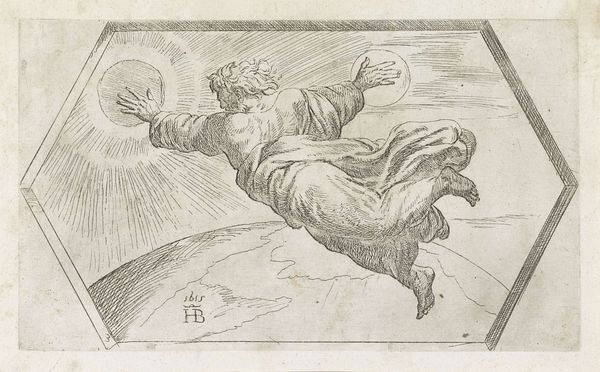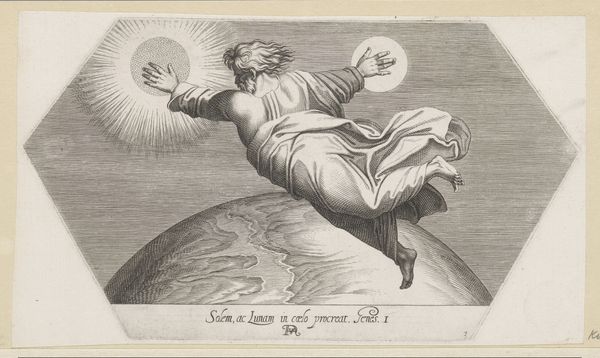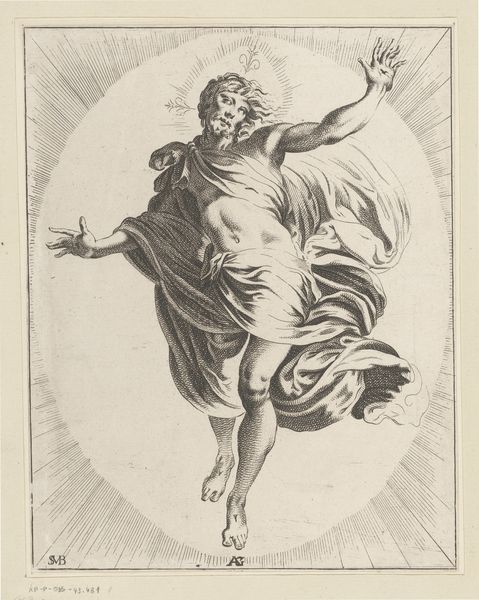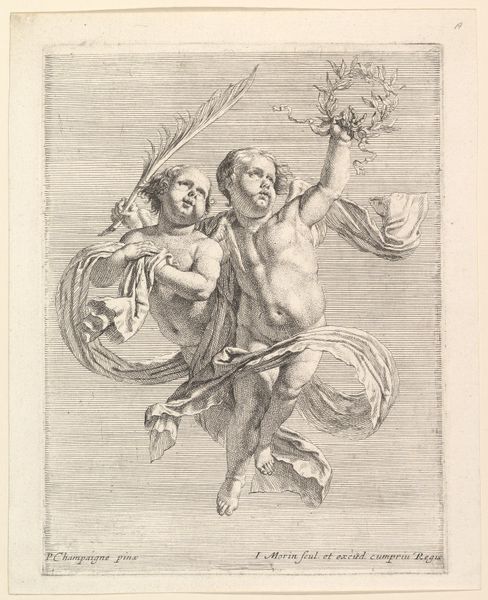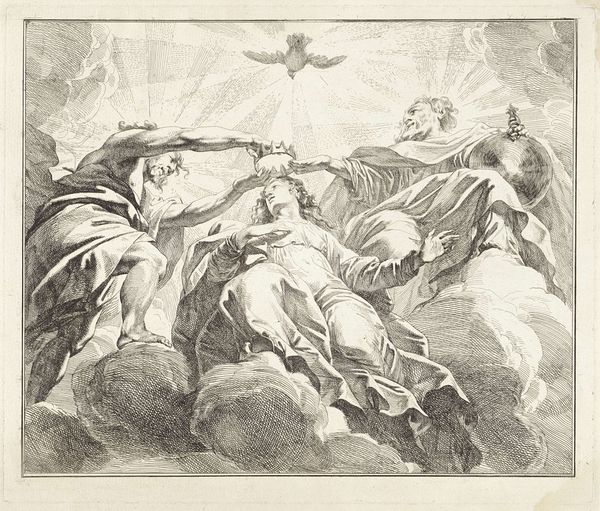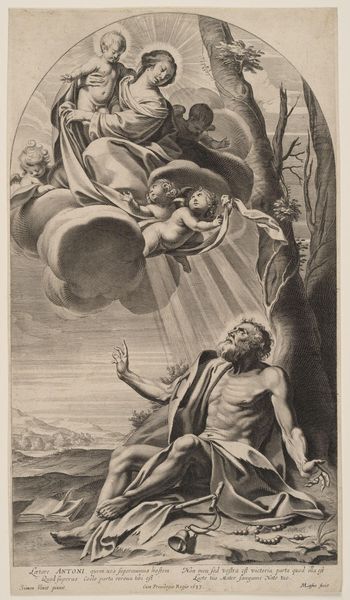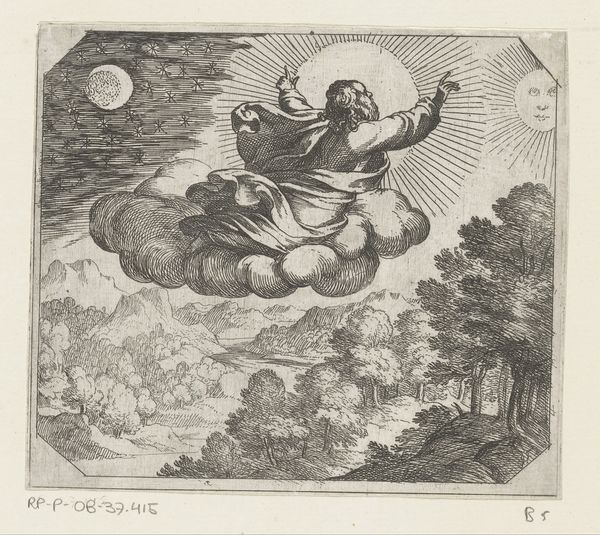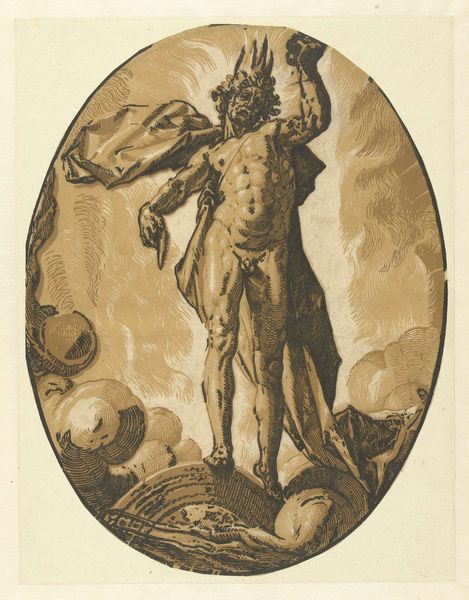
drawing, print, etching
#
drawing
#
narrative-art
#
baroque
# print
#
etching
#
figuration
#
pencil drawing
#
history-painting
Dimensions: height 131 mm, width 179 mm
Copyright: Rijks Museum: Open Domain
Curator: Let’s turn our attention to “God Creates the Sun and Moon,” a 1607 etching and print by Giovanni Lanfranco, housed here at the Rijksmuseum. It's a fantastic example of Baroque narrative art. Editor: Whoa. It’s so delicate. It gives off this incredible sensation of movement, almost like God’s surfing the cosmos, holding up beach balls that happen to be celestial bodies. Curator: Right! The piece visualizes the biblical account of creation. Considering its context, this image is steeped in theological and philosophical underpinnings regarding the relationship between divine will and the natural order. Lanfranco engages with the historical construction of power, representing a Eurocentric vision of a supreme, male creator. Editor: Eurocentric, definitely. But power is such a buzzkill to think about when there’s this awesome lightness. The hatching is super feathery, look. He’s up there, sort of hovering, light as a thought. Not intimidating at all, which kind of shakes up the typical image of a deity for me. It's much more poetic than preachy, y'know? Curator: Yes, and we can analyze it beyond that initial, albeit valid, feeling. How can we deconstruct the symbolism inherent in the positioning of God, or his apparent race and gender, as they affect contemporary understandings of religious and political authority? Editor: True. But that line he uses to indicate the Earth—a gentle curve—and then, God hovering above, literally buoyant... it's also a deeply human take on a celestial moment. Maybe that's the subversive element of its power for me? Curator: Subversive, possibly. What I see is how the composition also speaks volumes about Baroque strategies to legitimize hegemonic viewpoints through art, contributing to the systems of control prevalent in that era. Editor: Still… there's this whimsical quality! Okay, fine, so the historical lens is important. Power, Eurocentrism, the usual. But that etched line still flutters with possibilities. For me, it’s more interesting thinking how artists approach their feelings. It’s amazing how feelings themselves have histories too, right? Curator: An apt perspective, but just be aware that art is not only an aesthetic product but also an artifact embedded in networks of socio-political interactions. But point taken. Editor: Thanks. Now that I said that, I am not sure where I'm going to surf, now.
Comments
No comments
Be the first to comment and join the conversation on the ultimate creative platform.
